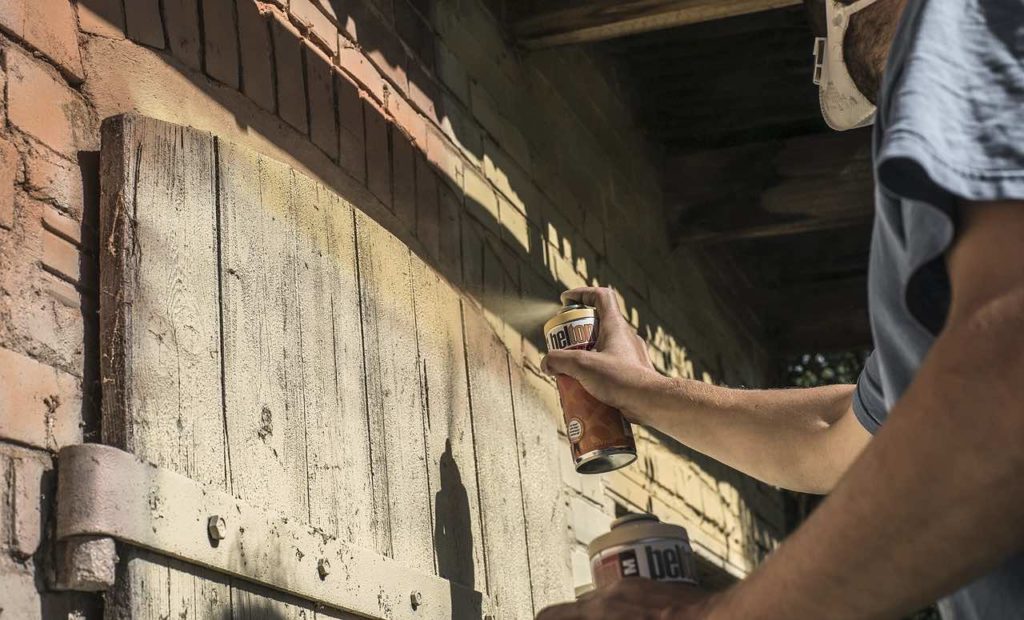How Long Does Spray Paint Take to Dry? Know How to Plan Ahead
-
Pete Ortiz
- Last updated:

After painting something with spray paint, your next step is typically to wait around until it dries. In the middle of a project, you’re probably wondering how long you’re going to have to wait. Often, you’re ready to get back to work.
Most of the time, the back of a spray paint can will tell you roughly how long it takes to dry. This text is usually tiny, so you may have to go hunting for it. However, this isn’t always an accurate estimation, as many factors can affect how long it takes to dry.
In this article, we’ll discuss some of those factors and help you consider how long you may have to wait for your new paint to dry.
The Effects of Temperature
The temperature has a large effect on how long it takes for spray paint to dry. The optimal temperature for most paints is between 65°-85° Fahrenheit. If it is much hotter than this, you will experience a negative effect on the drying time. Hotter temperatures are not the best for drying paint.
However, colder is not necessarily worse. You don’t want it to be too cold, as this can freeze the wet paint. The odds of this happening are very low, but you may have to consider your local climate before spray painting something in the middle of winter.
Material
The drying time can also vary depending on the material you’re painting. Different materials have different factors that will shift the drying time of your project.
Metal dries very quickly, as it is not very porous. It also dries faster in warmer temperatures, which is a bit unusual. Usually, you can expect it to be dry in about 10 minutes.
Cardboard is very porous, so it can take about 15 minutes to dry. Ventilation is essential, though. We recommend painting outside or using fans.

Glass is an unusual material. You’ll want to paint very lightly, as the paint will run easily on these surfaces. You should wait 15 minutes in between coats, but it may take the paint over 24 hours before it is all the way dry.
Rubber is extremely porous. It will likely take at least 24 hours for the spray paint to dry. For this reason, you’ll want to plan your time, especially if you’re doing multiple coats.
Other Factors to Consider
You may also need to consider the wind speed and humidity when calculating how long it’ll take for your spray paint to dry. Usually, these factors don’t have much of an effect on speed. However, if the wind is powerful, it can make the paint dry faster. It may also spread it around, so you may want to consider doing it on a different day.
The humidity may have a small effect as well. In areas that have very high humidity, the paint may take longer to dry. This is because there is more moisture in the air, so the air will keep the paint moist. If the humidity is very low, the paint may take less time to dry. However, humidity has minimal effect overall. You shouldn’t necessarily wait until the humidity is low to improve drying time.
You’ll also have to consider how thick the paint layer you’re putting on. Thicker layers of paint will take longer to dry, as you might imagine. It is recommended to apply spray paint in very light layers to prevent pooling and running.

Does Paint Have To Be Completely Dry Before Adding Another Coat?
No, if you’re adding another coat, the paint does not have to be completely dry. Instead, you can spray on the next coat when it is only semi-dry, which will typically take about 5 minutes. The paint’s surface will be dry at this point, so the new layer will have something to stick to. However, it won’t necessarily be dry enough to touch, as the bottom layers of paint may still be wet.
If you only wait for the paint to be semi-dry between layers, you can substantially cut down the overall waiting time.
How Can You Make Spray Paint Dry Faster?
Ventilation is your best bet for ensuring that spray paint dries quickly. Try adding fans or leaving or project in a safe place outside on a windy day. This will help the spray paint dry faster. Of course, you don’t want to put so many fans on it that it moves the paint around, though. There is a limit to what ventilation can do.
By applying only a thin coat of paint, it will also dry faster. There is no reason to drench your work surface. This will make the paint pool and run, as well as dry substantially slower.

You can also control when you paint. When the humidity is really high, you may want to consider moving the painting to a different day. However, it is essential to remember that there is no perfect day to paint. If you wait for all the factors to be ideal, you’ll probably end up never painting.
Featured image credit: mrganso, Pixabay
Contents


